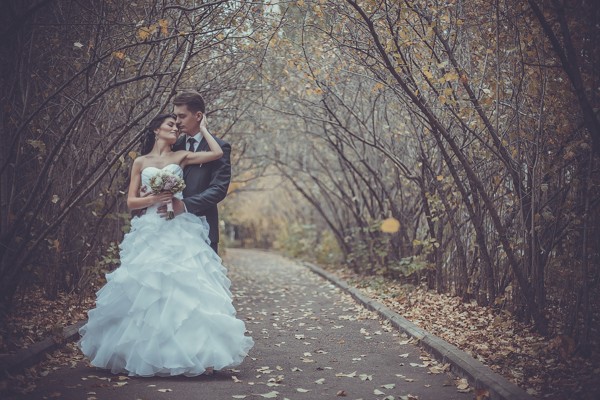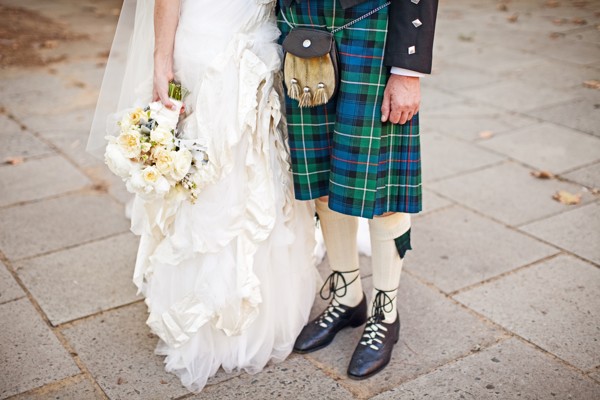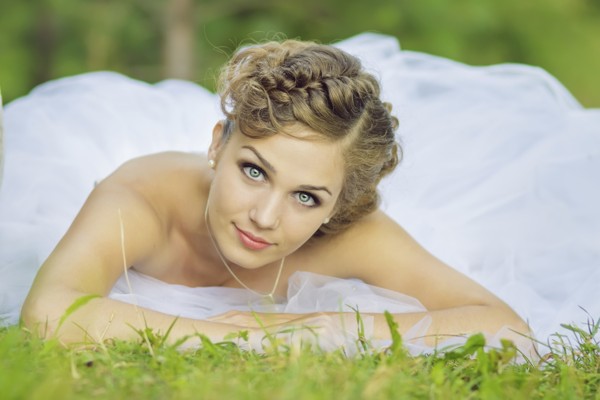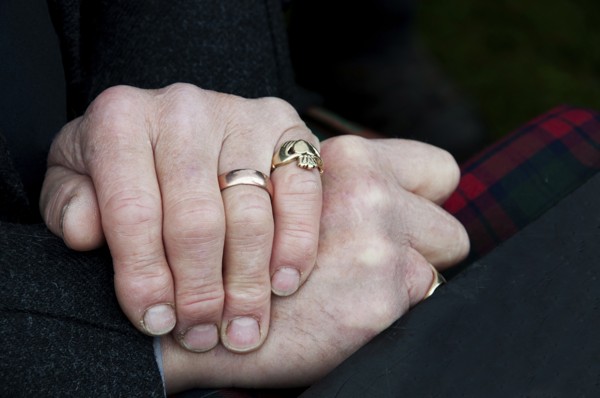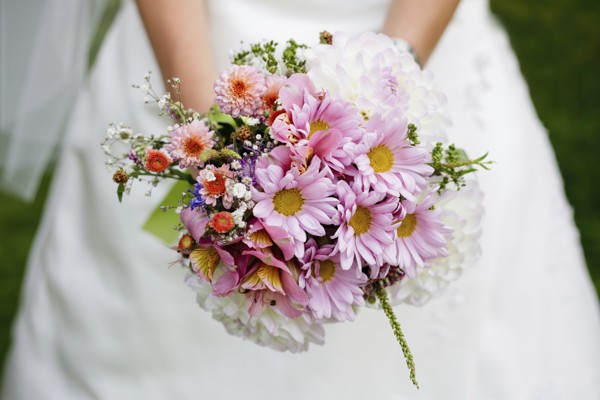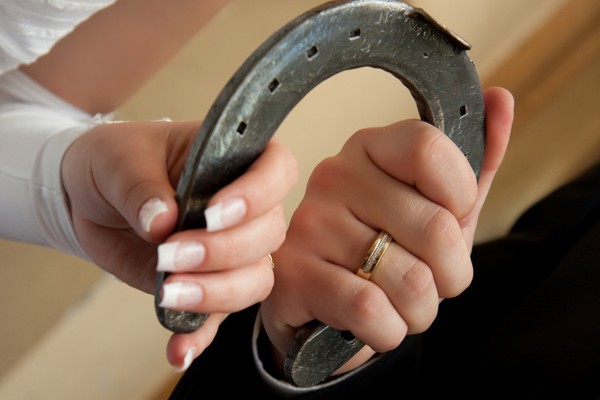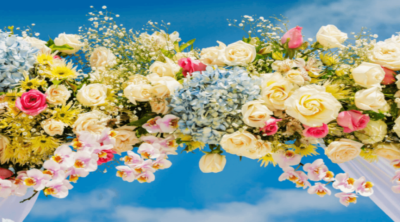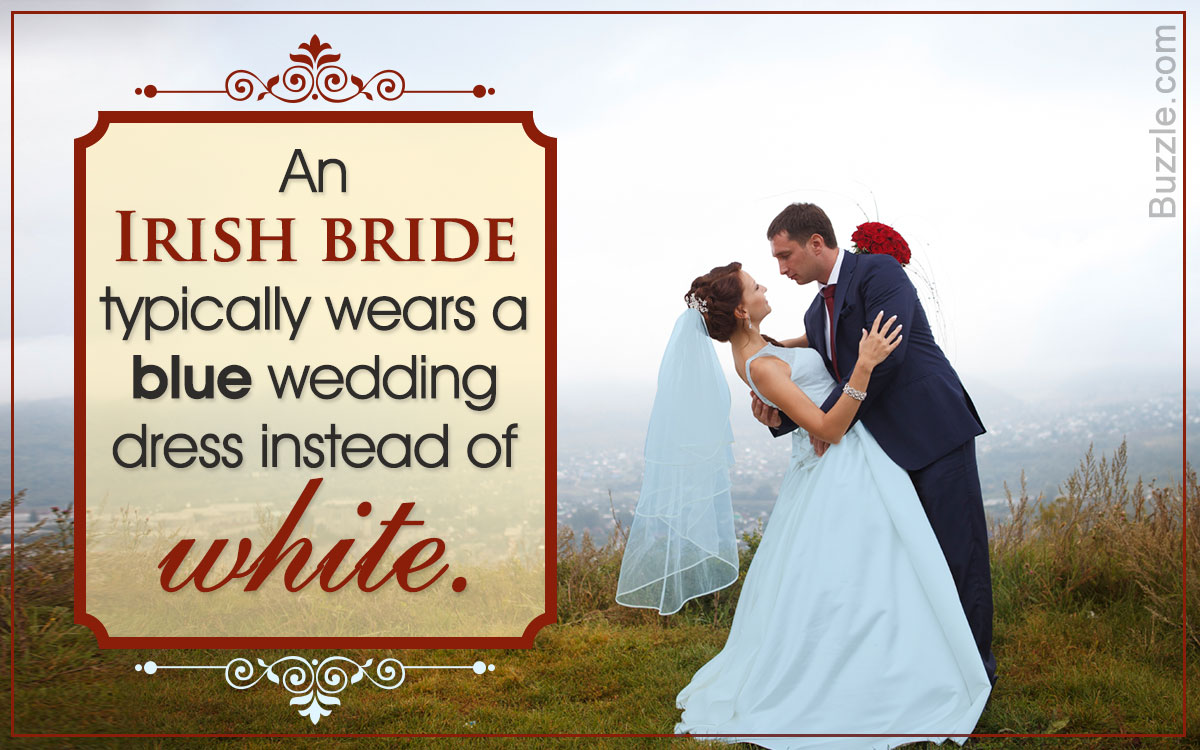
The Irish wedding traditions have many interesting stories behind them. Wedessence brings to you all the reasons why the Irish do the way they do it!
Can You Believe It?
Fairies have always been an important part of the Irish folklore. In olden times, it was believed that fairies were attracted to beautiful things, and wanted to keep them for themselves. This belief gave rise to various superstitions revolving around protecting a bride from the fairies. It is therefore, that the bride is to keep at least one foot on the floor while dancing at the wedding, or the fairies might spirit her away. Aw!
Each culture has a different set of traditions and customs, when it comes to uniting two lovers in holy matrimony. While some believe in revolving around a holy fire (as in the Indian culture), others jump a broom together (as seen in African cultures), to declare their union as man and wife. And Ireland, in this case, is not far behind. The country, which has a rich cultural heritage, follows a number of interesting customs and traditions when it comes to weddings. From hand fasting to throwing a shoe at the bride, an Irish wedding has it all. Here is a list of the few most unusual ancient as well as modern Irish wedding traditions.
Traditions and Customs
Wedding Attire
In the Irish culture, color blue is believed to bring the bride good luck and prosperity on her wedding day. Before white, it was blue that was considered a symbol of purity and virginity. Although nowadays, it isn’t a compulsion to wear a blue dress, the “something blue” is still incorporated into one of the bride’s accessories.
Most grooms prefer to wear Celtic kilts, which are plaid skirts that Irishmen wore during the medieval times. The groomsmen may or may not wear kilts. However, vests and sashes can be made out of tartan for the ceremonies. Below is a verse that was used by the brides to choose the color of their wedding dresses.
Marry in white everything is right,
Marry in blue lover be true,
Marry in pink spirits will sink,
Marry in gray live far away,
Marry in brown live out of town,
Marry in green ashamed to be seen,
Marry in yellow ashamed of your fellow,
Marry in black wish you were back,
Marry in red wish you were dead,
Marry in tan he’ll be a loved man,
Marry in pearl you’ll live in a whirl.
Bride’s Hairstyle
Braided hair has long been associated with feminine power and luck, the reason why most Irish brides wear their hair in braids on their wedding day, usually with a lace or ribbon woven through it.
Hand Clasping
In a traditional Irish wedding, the hands of the couple are clasped together with the help of a ribbon, cord, or a rope. This represents their wish to spend the rest of their lives together, and signifies their bond as husband and wife. Looks like that’s where “tying the knot” came from, eh?
Magic Handkerchief
In an Irish wedding, the bride tucks a handkerchief into her dress or bouquet. The handkerchief symbolizes fertility, and the bride usually carries it with her throughout the day. The same handkerchief is later used as a part of the Christening dress or bonnet, when the couple has a baby. It is further used at the child’s wedding, thus continuing the custom.
The Claddagh Rings
The Irish wedding ring is called a Claddagh ring, named after a village in Ireland with the same name. This ring is one of a kind, and has a heart that is held by two hands. The heart on the ring symbolize love, the crown on top of it symbolizes honor, whereas the two hands holding it represent faith. The ring is worn in different ways to symbolize various things.
- If the ring is worn on the right hand, with the point of the heart facing the fingertip, it indicates that the woman is single.
- When flipped around so that the point faces the wrist, it indicates that the woman is in a relationship.
- The ring indicates engagement if it is worn on the left hand with the crown pointing inwards towards the wrist.
- Once the couple is married, it is turned around so the crown is pointed at the bride’s fingertips.
- Both, the bride and the groom wear their wedding rings on the ring finger of their left hands.
Also interesting is that the wedding rings are passed around the congregation at the beginning of the wedding ceremony. Each guest holds the rings for a few seconds, and says their silent prayer for the couple. The rings are therefore believed to be blessed with a lot of luck and happiness for the couple.
Music
Generally, a harpist plays traditional Irish music before the wedding. As the couple walks away after the ceremony, bagpipes are played. Popular tunes that are played during the wedding include “Highland Fling” and the “Stack of Barley”.
Dance
Cèilidh, a traditional Irish dance form is usually performed at the wedding, either by the guests or hired dancers. After the couple’s first dance, the groom dances with his mother-in-law first, and then his mother. On the other hand, the bride dances with her father-in-law first, and then her father.
Food
A typical Irish wedding menu includes Irish soda bread, corned beef, and cabbage, with plenty of whiskey.
Wedding Cake
An Irish wedding cake is typically a fruitcake. It is made using honey, and is then soaked in an Irish whiskey and further frosted with sweet glaze. The icing is usually made with almond paste.
Flowers
Most Irish brides wear a wreath of wildflowers in their hair, and carry a basket or bouquet of the same. A few sprigs of lavender are often included, as a symbol of love and devotion.
Choosing the Day
In ancient times, the day and the month when the couple decided to marry was also decided based on various superstitions. Some days and months were considered lucky, while others were believed to bring bad fortune to the couple. Here is a small verse about the best days to wed.
“Monday for health,
Tuesday for wealth,
Wednesday the best day of all,
Thursday for losses,
Friday for crosses,
And Saturday no day at all.”
The month of the wedding was chosen based on the following verse:
“Marry when the year is new, always loving, kind, and true.
When February birds do mate, you may wed, nor dread your fate.
If you wed when March winds blow, joy and sorrow both you’ll know.
Marry in April when you can, joy for maiden and for man.
Marry in the month of May, you will surely rue the day.
Marry when June roses grow, over land and sea you’ll go.
They who in July do wed, must labor always for their bread.
Whoever wed in August be, many a change are sure to see.
Marry in September’s shine, your living will be rich and fine.
If in October you do marry, love will come but riches tarry.
If you wed in bleak November, only joy will come, remember.
When December’s rain fall fast, marry and true love will last.”
Wedding Vows
The Irish Vow of Unity is usually the one to be used at an Irish wedding. It goes as follows:
We swear by peace and love to stand,
Heart to heart and hand in hand.
Mark, O Spirit, and hear us now,
Confirming this, our Sacred Vow.
Throwing the Bouquet
This is one tradition that we are familiar with. Just like in the U. S., the bride in Ireland too, throws the bouquet to a crowd of women. And as we know, whoever catches it is the lucky one to be married next.
Horseshoe
During the Celtic times, a horseshoe was considered to be lucky. It is for the same reason that the Irish brides generally carry a horseshoe in their bouquet, or as a charm in their bracelet.
On the way to the Church
The bride and the groom often take different ways to the church, symbolic of their separate lives coming together. It is also common for the bride to take a different way home, from the church after the ceremony, as a sign of her new life.
Honking Horns
In olden times, the wedding was marked by the firing of rifles. Nowadays, the same is done by honking horns.
Locking the Church Door
You might be surprised to see the church door being locked at an Irish wedding. The tradition began when Irish men began to get cold feet on their wedding day, and the guests, as a result, started to lock the doors to ensure the groom went through the ceremony.
Gifts
In an Irish wedding, the traditional wedding gift is a bell. Chiming the bell is thought to keep evil spirits away. Some couples even ring the bell while they recite their vows. Other things that are gifted to an Irish couple include gifts with the Claddagh symbol, celtic knots, and shamrocks.
The Honeymoon
The Irish translation for honeymoon is “mi na meala” which literally means the month of honey. In olden times, the newly weds spent an entire month drinking a traditional honey mead called Bunratty Mead, which was believed to promote fertility. This is where the term “honeymoon” sprung from. The “honey” stood for the mead, and the “moon” represented the full lunar month that the couple spent in seclusion, so as to conceive within the first month of the marriage.
Superstitions
» Whiskey is sprinkled on the ground of the reception so as to ward off any evil spirits.
» In the Irish culture, it is believed that you should pass a piece of wedding cake through the bride’s ring if you haven’t met your true love. If you put it under your pillow, you will dream about your true love that night.
» Another tradition to ward off the evil spirits is ringing the bells. In olden times, the guests at the wedding were handed small bells to be rung during the ceremony. Nowadays, the bells are simply incorporated by the brides as a part of their jewelry. This is believed to have been the origin of ringing church bells after a wedding ceremony.
» It is believed that the horseshoe that the bride carries, is always supposed to point upward, or the luck of the couple might turn out.
» It is a common belief that if the bride wears a green dress on the night before her wedding, it will bring a lot of prosperity and abundance to the couple.
» Rains on the wedding day are considered bad luck in the Irish culture. Good weather is supposed to bring good luck to the couple. Irish brides, therefore, often place a statue of the Infant of Prague outside the church, so as to ward off the rains.
» Hearing a cuckoo or seeing a trio of magpies on the wedding day is considered lucky.
» The veil on the bride’s head is always placed by one of her happily married friends, so as to borrow some of the happy couple’s good faith and happiness.
» If the newlyweds take three bites of salt and oatmeal each, at the beginning of the reception, it is believed to ward off evil.
» Before going to the church, the bride’s mother and the groom’s father give the bride and the groom (respectively) a shilling each, which is later buried in the hearthstone in the couple’s bedroom. This is believed to bury the bad luck along with it.
» It is considered unlucky for one to sing at one’s own wedding, but lucky to throw a few coins in the crowd.
» A common Irish superstition is that it should only be a man to be the first one to kiss the bride congratulations. If the bride, is by any chance, greeted by a woman first, it will bring bad luck to the couple.
» The bride and groom should never wash their hands in the same sink. It is supposed to bring a lot of hardships in their married lives.
» An old shoe is thrown at the bride after the wedding, so as to shower good luck upon her.
» It is believed that if the bride’s mother-in-law breaks a piece of the wedding cake on the bride’s head as she enters the groom’s house, the bride and the groom will be friends forever.
» The bride’s wedding earrings are believed to bring her luck, every time she wears them.
So now we know that not only are these various customs interesting, they also have a special meaning attached to them. Following these wonderful traditions on your wedding day is a great way to honor your Irish heritage.
